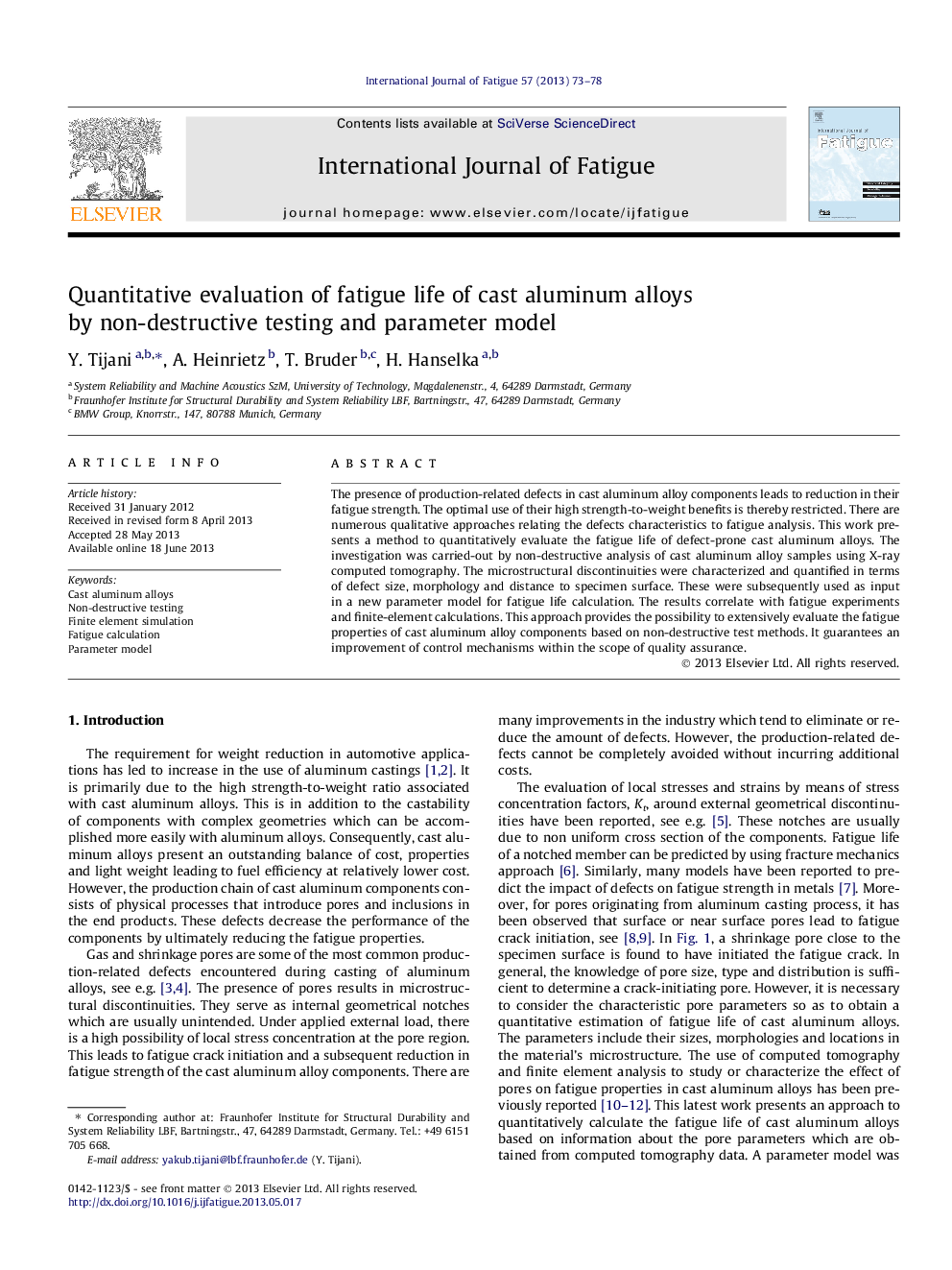| Article ID | Journal | Published Year | Pages | File Type |
|---|---|---|---|---|
| 780829 | International Journal of Fatigue | 2013 | 6 Pages |
•We model the influence of gas and shrinkage pores on cast aluminum alloys.•We develop a method to quantify the fatigue life of samples from cast aluminum alloys.•The impact of any cast defect depends on its size, shape and location in the microstructure.•Fatigue behavior can be determined by non-destructive testing.
The presence of production-related defects in cast aluminum alloy components leads to reduction in their fatigue strength. The optimal use of their high strength-to-weight benefits is thereby restricted. There are numerous qualitative approaches relating the defects characteristics to fatigue analysis. This work presents a method to quantitatively evaluate the fatigue life of defect-prone cast aluminum alloys. The investigation was carried-out by non-destructive analysis of cast aluminum alloy samples using X-ray computed tomography. The microstructural discontinuities were characterized and quantified in terms of defect size, morphology and distance to specimen surface. These were subsequently used as input in a new parameter model for fatigue life calculation. The results correlate with fatigue experiments and finite-element calculations. This approach provides the possibility to extensively evaluate the fatigue properties of cast aluminum alloy components based on non-destructive test methods. It guarantees an improvement of control mechanisms within the scope of quality assurance.
